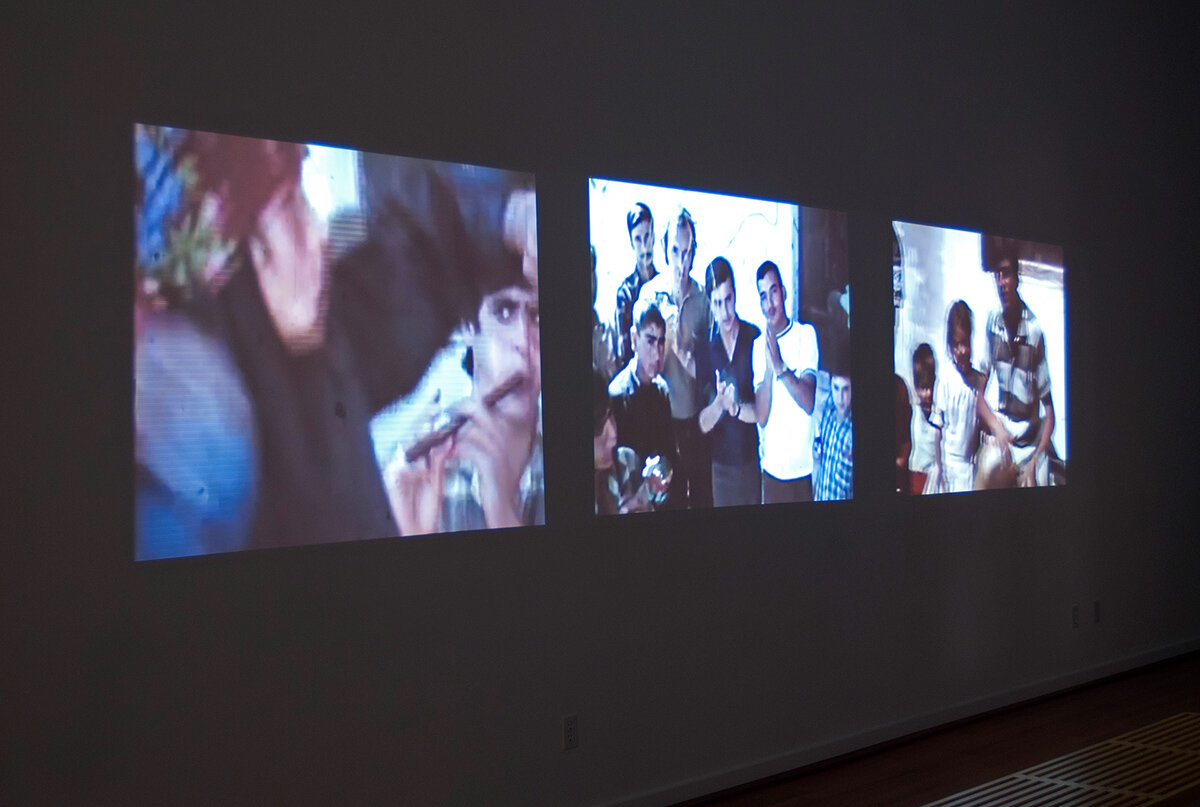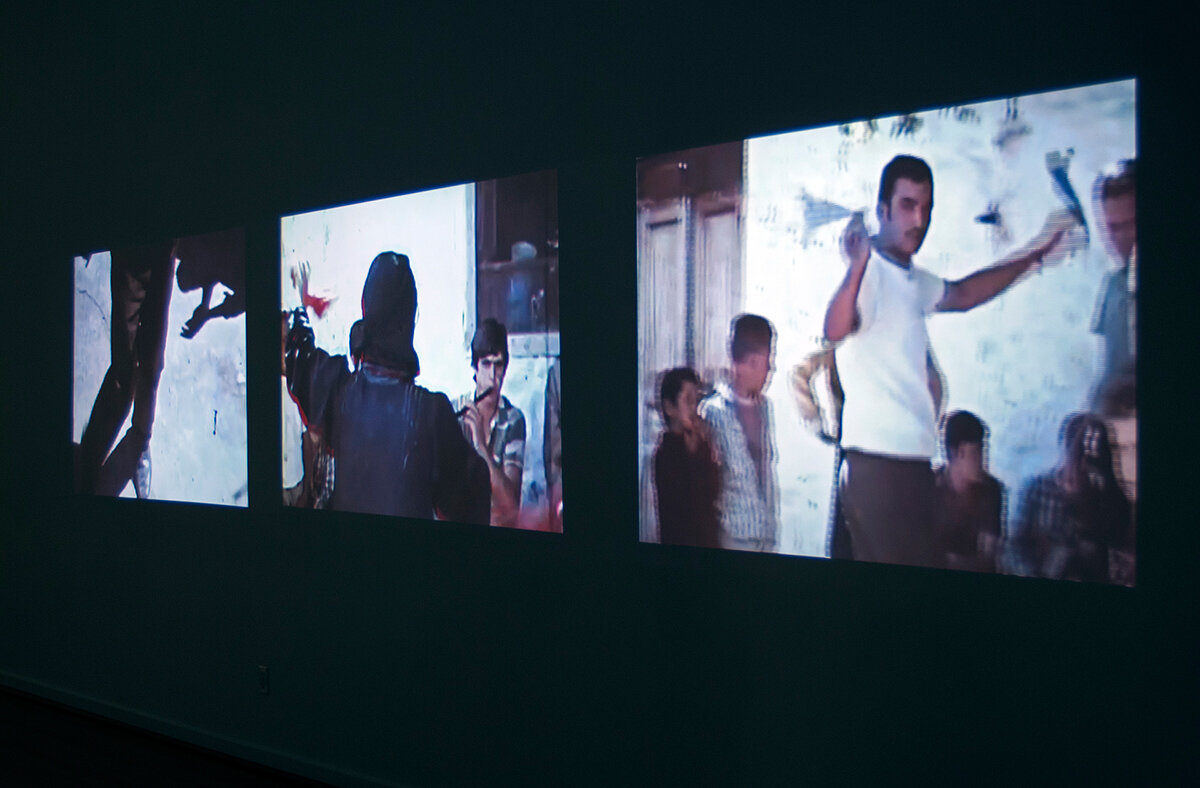Antimatter 2015
Media Installations
October 16 to 31, 2015







in the main Deluge gallery
No Time for Tomorrow
Emilie Serri | 2015 | 5 min
“How do you mourn a country and a history of which you feel so distant and attached to at the same time? How do you deal with the loss of something you’ve never really known? Is it possible to construct a cultural identity in the absence of a country that is nevertheless one’s own? Is the absence of this referent the source of the uncanny feeling I’ve been experiencing?
No Time for Tomorrow was envisioned as part of a larger first person experimental documentary on cultural identity. The idea for the project first came about after a trip to Syria with my father and sister; one of the rare times I had travelled there. Not long after our visit and right before the beginning of the war, my grandmother passed away and I realized I didn’t really know her or Syria. Half Belgian, half Syrian, I was born and raised in Montreal and never had much contact with that part of my cultural heritage. Her passing and the beginning of the uprising triggered the need to investigate this post-diasporic Syrian identity that was both so familiar and foreign to me.
When I started working through ideas of identity, history and memory, found footage seemed like the most appropriate material to engage with. I spent a lot of time on YouTube looking for images of Syria that would help me make sense of what I was missing. When I stumbled upon the film of a traditional wedding ritual shot in Busra in 1972, I felt that it presented a much larger history of Syria as well as an opportunity to reinterpret my relationship to this past, as it affected my present. These found images were edited with amateur footage of the war (also found on YouTube) and personal archival material—a sound excerpt taken from a 1986 home movie of my father recording a tape for a Mother’s Day gift and a recently recorded conversation with my father in which he was teaching me how to count in Arabic. The countdown echoed both the tripartite physical structure of the film and the time left before Syria’s disappearance. The mixing of the public and the private spheres and the intertwining of past, present and future tense mirrors the construction of a complex political identity deeply rooted in both the personal and the collective.” - Emilie Serri
Originally from Montreal, Emilie Serri is a visual artist and filmmaker. Her films are distributed by LightCone in Paris and have been shown in festivals and galleries internationally.
in the Deluge entrance foyer
Down to Earth
Anna Vasof | 2014 | 7 min
It is no secret that shoes say a lot about the person wearing them. The shoe’s form, material and condition provide insight into social status, character and, last but not least, potential desires. In Down to Earth Vasof refers to this multifunctional significance while putting a very particular spin on the concept of “footwear,” fabricating highly distinctive mechanical devices for each of her shoe designs, some of which set entire stories in motion upon walking. A fork vainly fishes for olives, umbrellas pop open for protection, some shoes get caught in nets or hunt for mice, while others successfully flip pancakes or use a foot pedal to blow a trumpet and beat a marching drum.
Anna Vasof is an architect and media artist. She studied architecture at the University of Thessaly (2010) and is continuing her studies in Transmedia Art at the University of Applied Arts in Vienna, Since 2004 her award winning films have been screened in numerous international film festivals. Vasof is currently designing and building innovative mechanisms to be included in future projects.
in the Deluge transom window
Tribute to Busby
Eytan Ipeker | 2014 | 6 min
A kaleidoscopic homage to the great film choreographer and director.
A director of experimental and commercial films, Eytan Ipeker was born in Turkey and graduated from New York University. He attended the Berlinale Talent Campus in 2006 and founded the production company Kamera in Istanbul in 2011, where he currently lives and works. His films have been screened internationally at festivals in Greece, Italy, Thailand, USA and notably at the Toronto and Edinburgh International Film Festivals.
at Legacy Art Gallery
Invaded Reason
Karla Leyva | 2014 | 1 min
A small skittish dog set against a saturated floral background cycles through a world of responses to unknown offscreen stimuli. A bravura 60-second screen-test for the adaptation of fight or flight.
Kierkegaard said “learning to know anxiety is an adventure, which every man has to affront if he would not go to perdition, either by not having known anxiety or by sinking under it.” I believe this work started like that—as a necessity to confront something which afflicted me for several years. In essence, anxiety is a reaction from a stimulus that we perceive as dangerous or menacing, our amygdala sends signals to the hypothalamus and around 30 hormones are liberated—adrenaline amongst them—increasing heart rate, pulse and respiration. Our primitive being is awakened, activating the instinct to flight. Invaded Reason is concerned with this vicious cycle of tension, pressure, anticipation, isolation and a profound desire for escape.
Karla Leyva is a Mexican artist who works with photography and video, interested in the artificial and illusory qualities of both mediums. Her work is an exploration of the struggle between reality and fiction and how this tension affects the way we perceive ideas of acceptance, beauty, frustration and perfection. Leyva has participated in numerous international exhibitions including PhotoEspaña in Madrid, Atlanta Celebrates Photography, PhotoEspaña Trasatlántica in Tegucigalpa and IILA-FOTOGRAFIA in Rome. She is the recipient of various awards and production grants from the National Fund for Culture and the Arts in Mexico.
at Flux Media Art Gallery
Hither Green
Brandon Poole | 2015 | 3 min
Thus we find ourselves saturated within that familiar gaze of the omniscient observer, occupying the position of the detached “spectator,” looking down at the partially located actors, the peculiar uniformity of their dwellings, the wanderings of our nonhuman denizens, the steady and assured movements of capital: the serene repetition of the everyday. Here, the composition of Hither Green affects a formal indifference of vantage-point in sympathy with the startling indifference of the repeated: the mutual standing of things as substitutable objects in the horizon, condemned to recur ad infinitum to the tones of Westminster and the comforting promise that everything is indeed “all clear, all clear.”
Brandon Poole is a Victoria-based artist whose practice hovers between material and image.



